Peek inside Maine Woolens’ Textile Mill in Brunswick
The textile company keeps a family business—and a state tradition—alive.
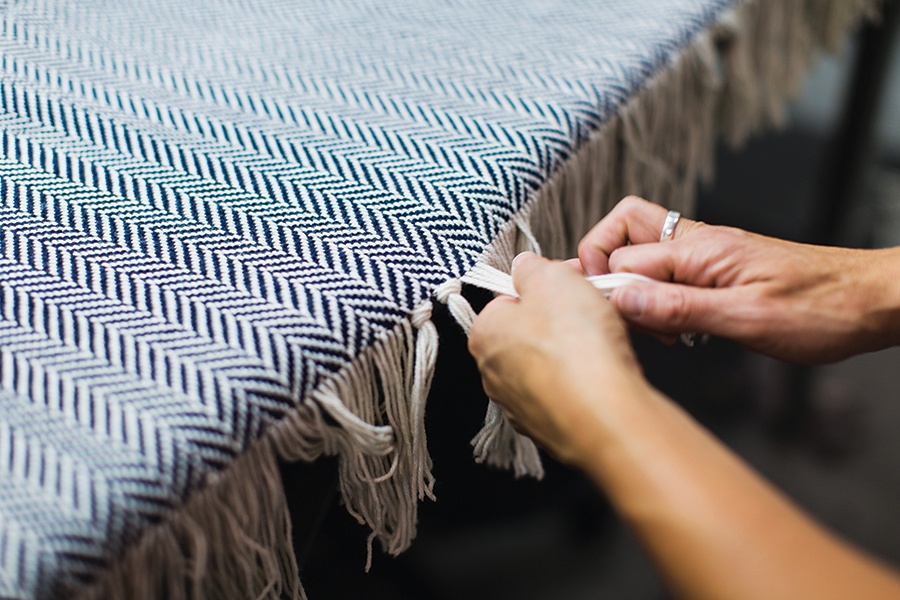
Photo by Jesika Theos
When it comes to her business, Maine Woolens owner Jo Boshold likes to stay hands-on. “I will go into the mill and do any job,” says Boshold, who’s worked in Maine’s textile mills for decades. “So if we’re short a person, I can inspect cloth or sew, and just go and do anything!” Luckily, with some 18 staffers busy weaving and serging the company’s signature cotton and wool blankets, Boshold usually doesn’t have to step in. But, as she likes to maintain, she could.
That all-in ethos comes from the sense of community within Maine Woolens—starting with its very founding. Boshold, in her nine years of owning the Brunswick-based business, has taken a family-first approach to textile production: Not only does she run the business alongside her actual family—her husband, Ray, is the company’s president and her son, John, is the vice president—but at this point, Boshold considers her production staff to be as much a part of her inner circle as her own flesh and blood. And that sense of loyalty has informed the company since the beginning: After she was forced to shutter the spinning-and-weaving mill she’d overseen for almost 20 years, Boshold decided to establish Maine Woolens in 2009, taking several of her longtime employees with her—including some she’d worked with since she first entered the field during the 1980s. “I have a lot of loyal people who work for me, some of whom I’ve worked with for almost 40 years,” she says. “So it really feels like a family, and the people are very important to me.”
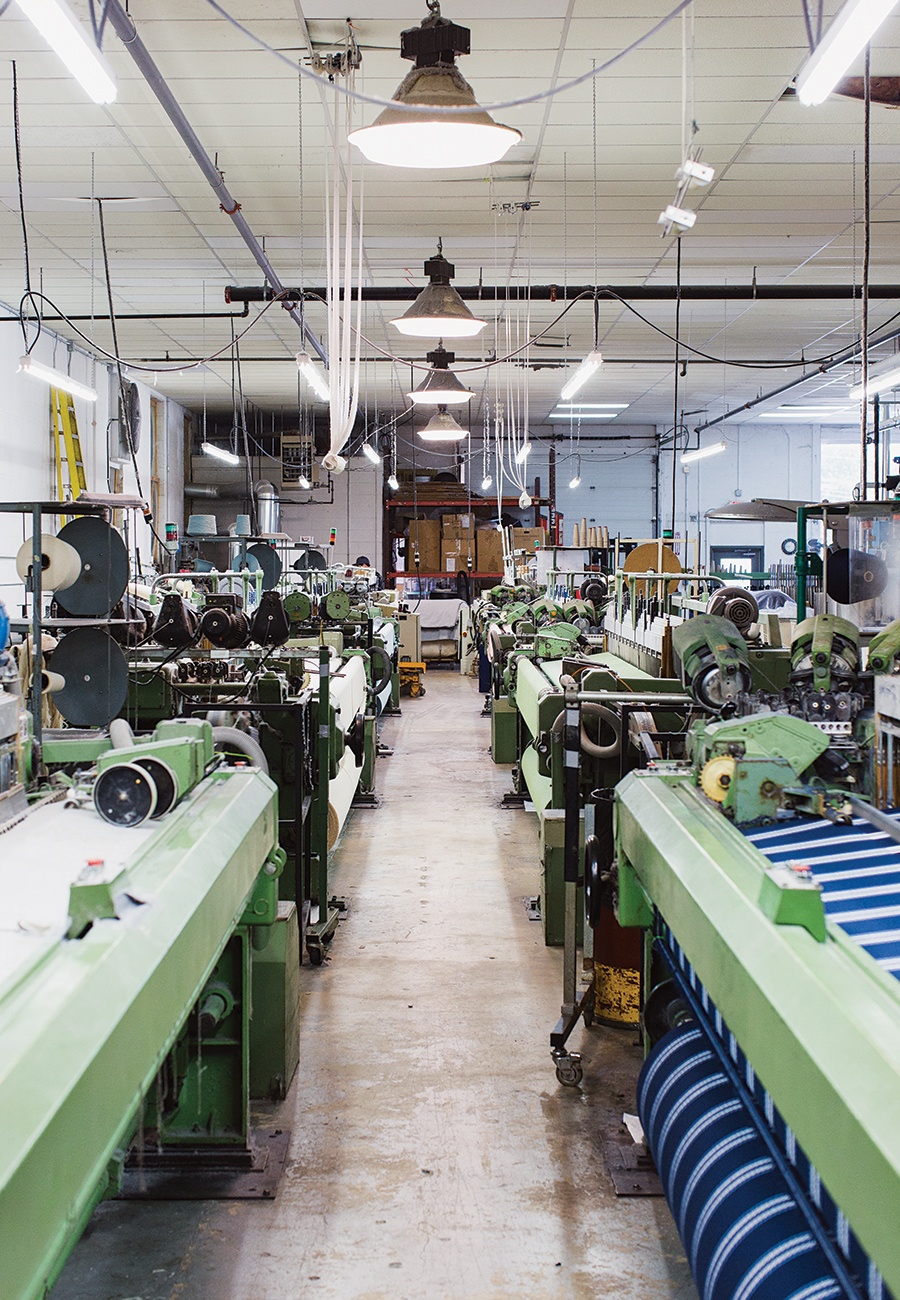
Maine Woolens currently has eight power looms, which the team uses to produce roughly 35,000 blankets per year. / Photo by Jesika Theos

Hemmer Jennifer Splude sews a double-needle hem around a swath of fabric. / Photo by Jesika Theos

Steve Robinson, one of a handful of staffers who have worked with owner Jo Boshold for decades, sets up a loom. / Photo by Jesika Theos
With combined decades of skill under their belts, the tight-knit team creates plush throws that reflect a high level of craft. They’re all made from either washable wool (merino or alpaca) or cotton, and most feature soft colors and geometric patterns. Each production cycle yields roughly 100 blankets, and the workers at the 15,000-plus-square-foot warehouse in Brunswick produce some 35,000 blankets a year. Of those wares, about 35 percent go to retail customers, Boshold says, and the other 65 percent go to catalog companies—including Maine Woolens’ nearby neighbor L.L. Bean. “I’m such a Mainer, it’s pathetic,” Boshold jokes.
The state holds a long and storied craft history, particularly surrounding textile mills, and thus keeping Maine Woolens’ entire production process in-house—from designing to dyeing to packaging—was always “purposeful and important,” Boshold says. To make one of their cotton blankets, which comprise the bulk of their orders, they start with natural yarn (largely made from U.S. cotton) and dye it, if needed. Once dry, workers wrap the yarn around cones, which they place onto a creel in a mechanical Nuovo Pignone Dobby loom according to a blanket’s pattern. After loading the cones onto the loom, a worker pulls a thread from each cone through the eyes of the loom’s needles, and the machine gets to work. Maine Woolens uses a process known as “sectional warping”: Because a creel can only hold so many cones of yarn at a time, the looms weave cloth in 100-yard increments, with workers tying the warps together to create a complete swath of fabric.
Once woven, the cloth is ready for finishing touches. In the sewing room, it gets cut into various blanket sizes (king, queen, etc.) and sent to serging, where a worker whip-stitches the ends of each blanket. From there, the blankets head to hemming, so each can receive a double-needle hem around all four sides. Finally, the blankets are washed and dried, inspected, folded, and packaged.
For Boshold, making blankets is more than a livelihood—it’s about putting something good into the world. It starts with making sure her workers receive decent health insurance and a living wage, and extends to the larger community: Boshold donates Maine Woolens wares to local charitable organizations such as the Red Cross, Boys & Girls Clubs of America, and the ASPCA—because, as she says, at the end of the day, everyone could always use a blanket. “I feel like I’m doing my part,” Boshold says. “I’m not taking; I’m giving and trying to keep things going. It doesn’t make me wonderful, but at least it’s a step in the right direction.”
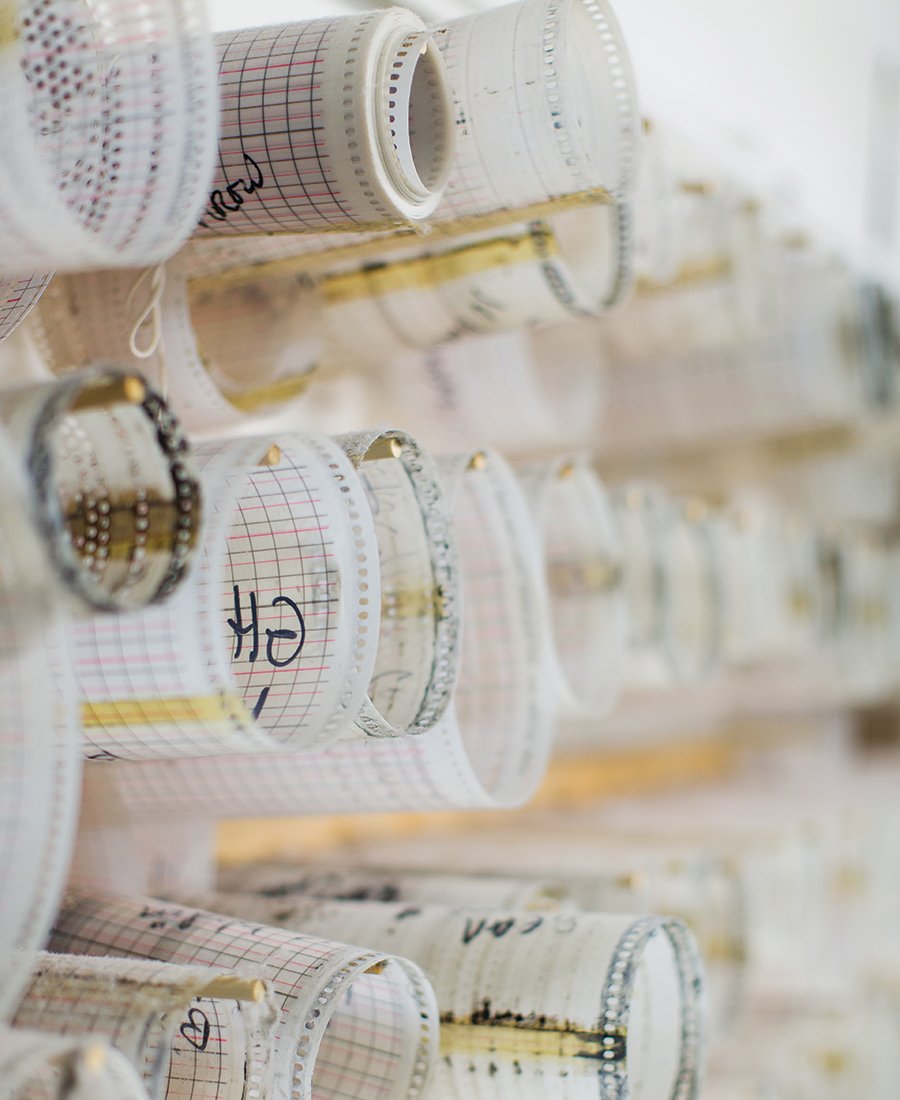
A stack of punched-out blanket patterns. / Photo by Jesika Theos
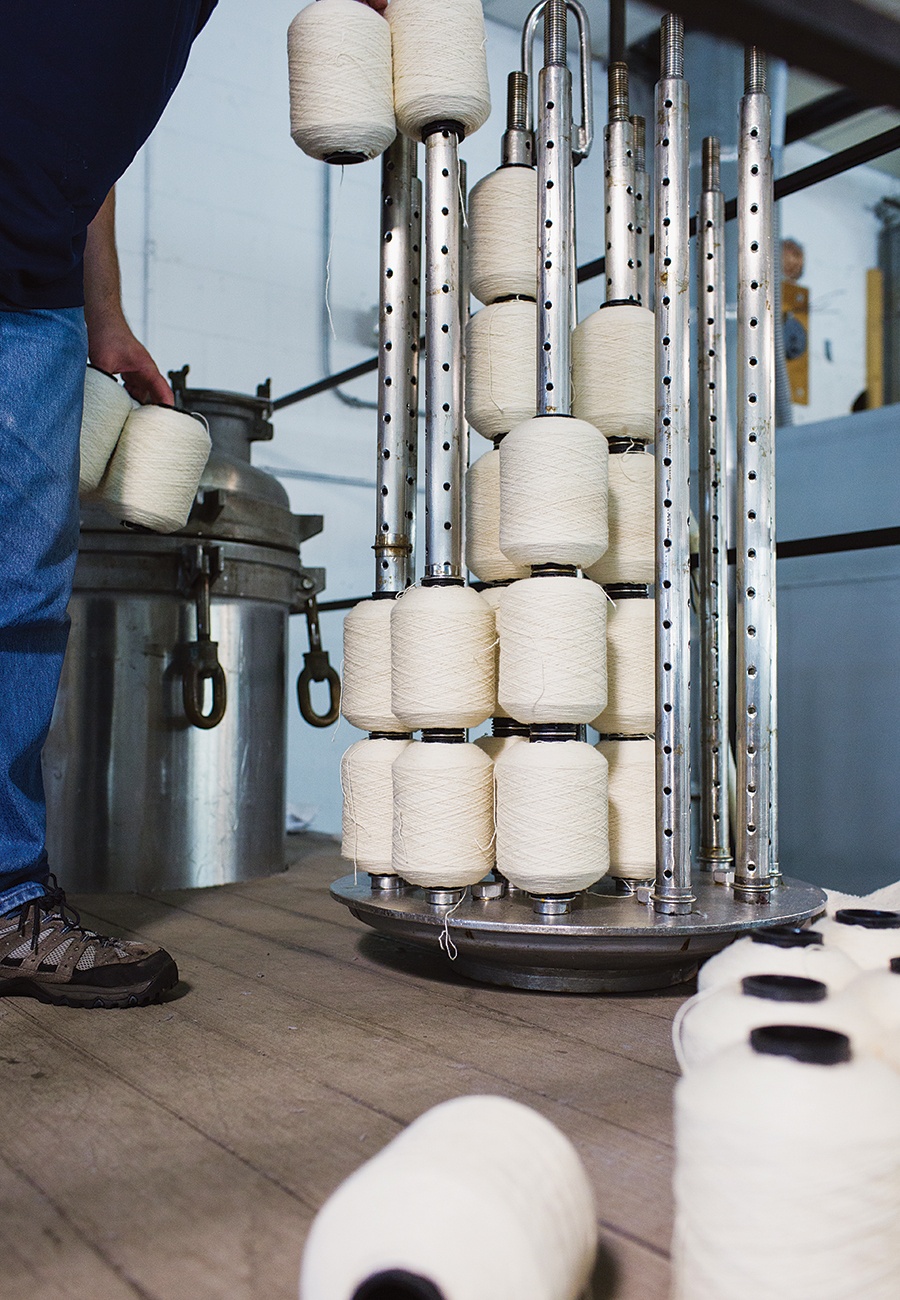
Workers dye wool and cotton in-house, using dye tubes and kettles. / Photo by Jesika Theos
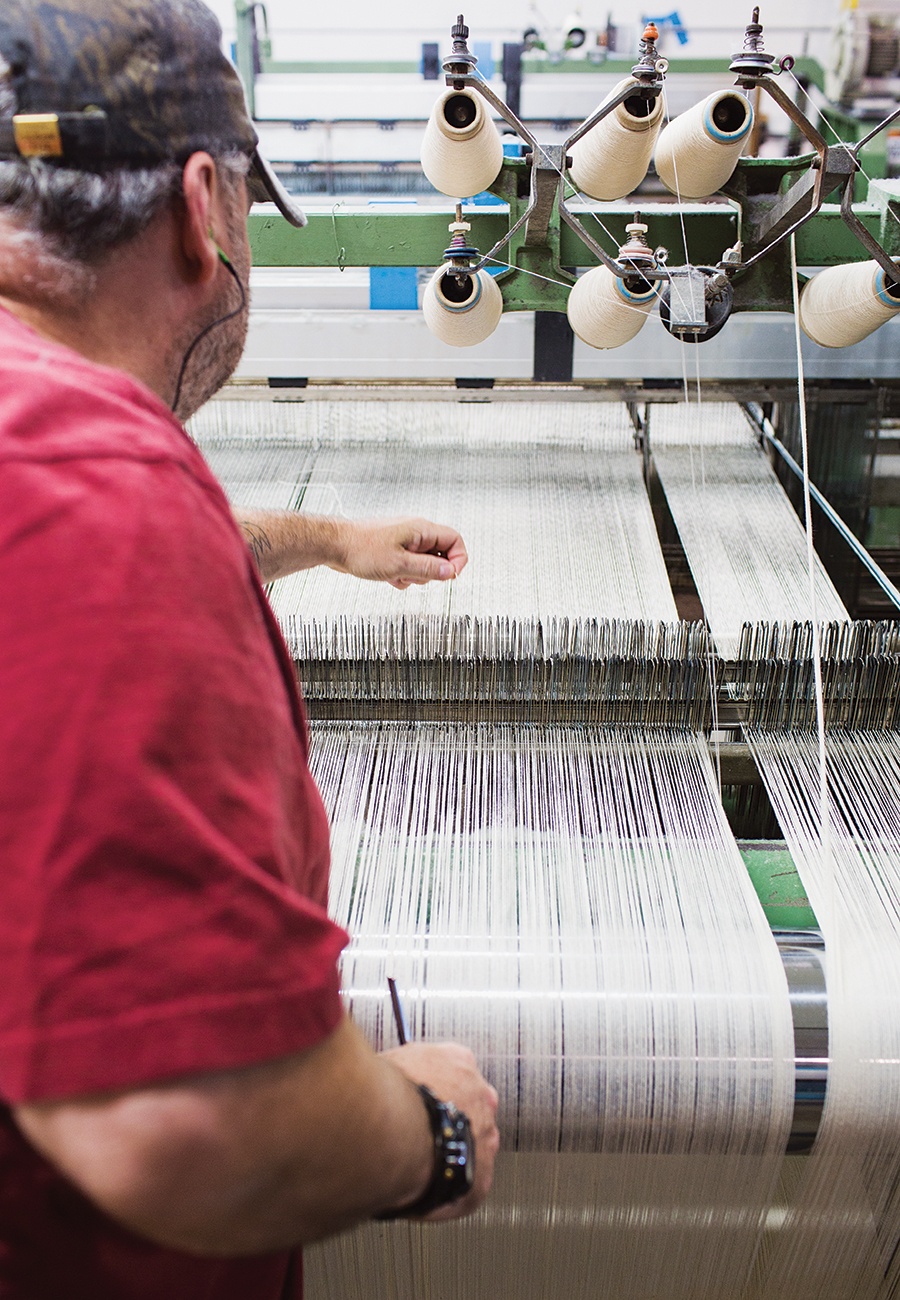
Weaver Mike Sullivan adjusts the yarn on a loom. / Photo by Jesika Theos

John Boshold’s sample-filled notebook and swatch set, which he uses to match and develop colors for dyeing. His skills come from a childhood spent in and out of the mills, Jo says. “He’s been in it for so long—when he was 10 years old, he was weaving!” / Photo by Jesika Theos
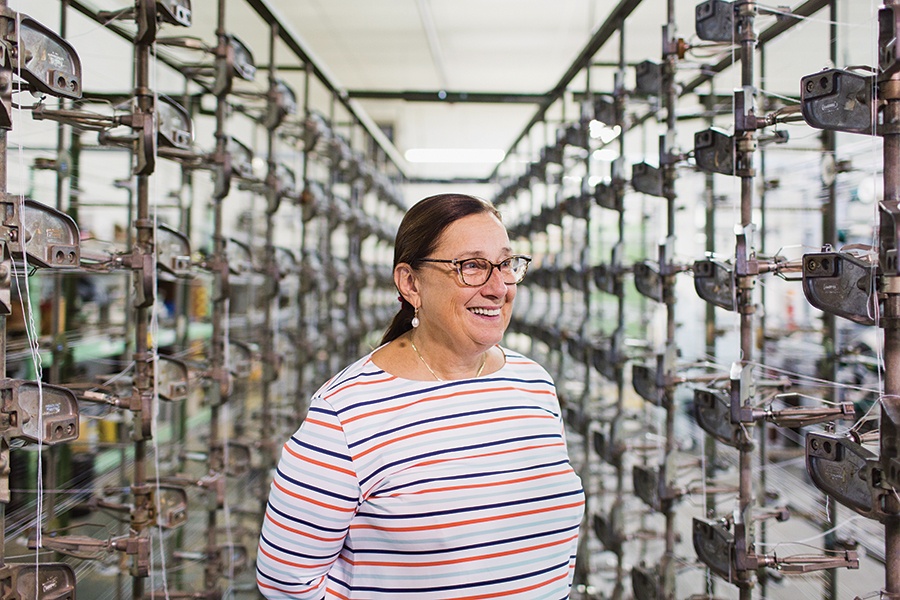
There’s nothing about weaving that Boshold doesn’t enjoy. “Once weaving gets into your blood, you can’t get it out,” she says. “You just love the smell of wet wool—I mean, it’s just not normal!” / Photo by Jesika Theos

There’s nothing about weaving that Boshold doesn’t enjoy. “Once weaving gets into your blood, you can’t get it out,” she says. “You just love the smell of wet wool—I mean, it’s just not normal!” / Photo by Jesika Theos

Boshold examines a blanket with her husband, Ray (left), and son, John. / Photo by Jesika Theos


